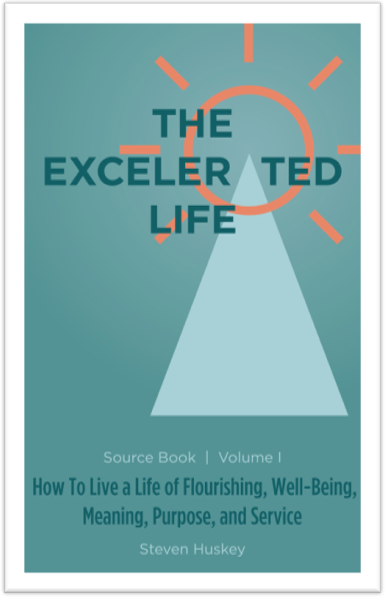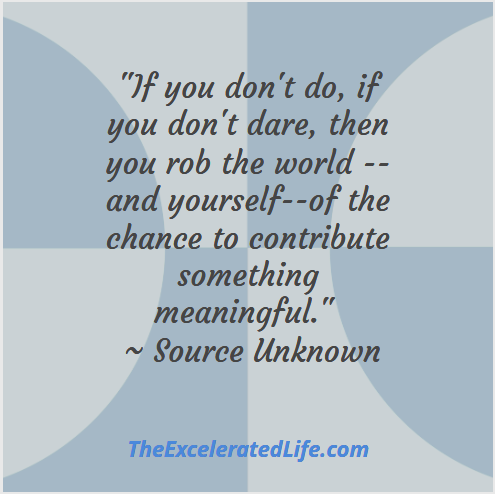You are the architect, the planner, for your life but like an archer shooting arrows at a target, you don’t control all the forces that determine the outcome. Without a plan, however, you are the archer firing arrows into the air at random. Use these strategies for Excelerated Goal Setting™.
Title Photo by Kampus Production
The Archer
Imagine an archer standing in a field, focused and determined. She carefully selects her target, visualizing its precise location in her mind. With steady hands, she pulls back the bowstring and aligns her aim with her target. She releases the arrow and watches it soar gracefully through the air, propelled by the force of her intentions.
However, once the arrow leaves the bow, the archer’s control over its trajectory is finished. External factors such as wind speed, air resistance, and unforeseen obstacles come into play. Any one of these can potentially nudge the arrow off course. Despite her meticulous preparation and skillful execution, the archer must surrender to the unpredictability of these external forces.

In this illustration, the archer symbolizes a person setting goals in life, while the arrow represents their actions aimed at achieving those goals. Just like the archer, we can diligently plan and execute our steps with precision and focus. However, we also recognize that external factors beyond our control may influence the outcome. Despite our best efforts, we will experience setbacks and deviations from the intended path.
The key lies in embracing both the process and the outcome with resilience and adaptability. Like the archer adjusting her aim in response to changing conditions, we too can recalibrate our strategies and persevere in the face of challenges. By staying committed to our goals while remaining flexible in our approach, we empower ourselves to navigate life’s journey with purpose and resilience
Choose Meaningful Goals
Without a target to aim at, the archer’s job is pretty pointless (no pun intended). She’s merely firing arrows into the air with no objective and no way to measure her performance. Without goals to work toward, you and I are much like an archer firing arrows at random. (Of course, not every activity must move us toward our goals, but without goals, we tend to get stuck in place.)
To have the most positive impact, we need SMART+Plus goals. You’re likely familiar with SMART goals – specific, measurable, achievable or action-oriented, realistic or results-oriented, and time-bound. So let’s look at the +Plus part.
Goal Orientation/Motivation/Content
Research in Positive Psychology has identified these criteria for creating goals as a means to increase positive thoughts and emotions about your goals. The +Plus in SMART+Plus goals includes goal orientation, goal content, and goal motivation. Here’s a quick look at each.
Goal orientation is primarily how we view our goals. We can choose approach goals, working toward a positive outcome, or avoidant goals, avoiding a negative outcome. Approach goals promote well-being; avoidant goals can detract from happiness. Sometimes, simply restating your goal in a positive direction changes the orientation. Consider the avoidant goal: “I will stop smoking” vs. the approach goal: “I am a healthy non-smoker.”
Goal motivation as we are using it describes where our motivation for working on the goal comes from. Intrinsic goals relate to our true internal needs and desires, we are internally motivated to achieve them. We choose extrinsic goals, on the other hand, because we think another person, or society in general, wants us to. Intrinsic goals are inherently satisfying and lead to a larger payoff in terms of happiness. Extrinsic goals have been shown to be frequently accompanied by anxiety and interpersonal problems.
The third criterion, goal content, is related to the types of goals we have. Goals related to intimacy, spirituality, and generativity (the desire to care for other people and to nurture younger generations) lead to happiness. Power-themed goals – a bigger house, bigger car, promotion at work, more money – do not. This isn’t to say you should not have those types of goals, but be aware that they often detract from happiness, rather than enhance it.
Check your goal against these three criteria. Is it oriented toward a positive outcome? Will pursuing the goal add to your feelings of well-being or bring stress and anxiety? Are you pursuing this goal because you want it or because you think someone else wants it for you?
Performance Not Outcome
“We spend our days pursuing various accomplishments that we desire to achieve; and yet for any given accomplishment . . . it’s always the case either you haven’t achieved it yet (so you’re dissatisfied because you don’t yet have what you desire) or that you’ve already attained it (so you’re dissatisfied because you no longer have it as something to strive toward).” [Burkeman]
Tina wanted to lose fifty pounds. But as I pointed out to her, you can’t do an activity called “lose weight”. You can track what you eat. You can limit sugar and junk foods and choose more nutritionally dense foods. And you can increase your activity. I suggested that instead of setting a goal to weigh less she could set several small process goals to do more of the activities that lead to weight loss.

You have little or no control over outcomes. But you can break a desired objective into steps you can perform that will likely lead to success. Process goals are measurable, so you know what you must do and you know when you’ve done it. This leads to a greater sense of internal control and improved self-confidence. Additionally, you can feel successful at having met the performance goals, regardless of the final outcome.
So make the result you are aiming for the process of reaching your goal instead of the product of reaching the goal itself . . . focus on performance. Use your goal as a rudder to steer your practice sessions but not as an indicator of how you are doing. [Sterner]
MOWABP: Make Our World A Better Place
“‘What truly matters?’ This is the question . . . [at] the heart of your own convictions, beliefs, and goals in life. It’s the question that can help you separate the truly important from the trivial and can help you maneuver through the minutiae in pursuit of the momentous.” [Ryan]
Let’s briefly review what it takes to set meaningful goals: goal orientation, motivation, and content. And specifically, how can achieving your goals help make our world a better place? Orientation, as you recall, involves choosing goals that lead you to achieve something, rather than avoid something (eg., staying healthy vs. not getting sick). Motivation identifies your goal as something you want rather than working toward an objective you think you “should” want, or that someone else has chosen for you. And content is where the MOWABP rubber meets the road — how will achieving your goal make you and your world better?
In the Excelerated Life™ model, Excelerated Goal Setting™ and Excelerated Contribution™ go hand-in-hand. We strive toward goals that help us improve as individuals and also help improve our homes, our communities, our society, and our world!
When your goals focus on what you can contribute, there is less of a sense of success or failure, because you are doing what you can do in the moment.
You’ll spend less time on things that don’t matter because you see more clearly where you should spend your limited and precious time, and just as importantly, where you shouldn’t.
Finally, when you shift your focus from “how will this benefit me” to “how can I contribute my time, skills, and other resources to benefit others”, your view of the world and of the opportunities open to you grows and expands.
[Scott]
To practice this attitude and method of goal-setting, look for ways to contribute. Go above and beyond the call of duty and make a contribution for its own sake, without concern for reward or achievement. Focus on what you’re giving, not what you’ll receive. And don’t do everything with an eye for what you’ll get out of it. Instead, look at the differences you can make. [Sullivan] Do this, and your rewards will come: “Give, and it shall be given to you: good measure, pressed down, shaken together, and running over, will be poured into your lap. For with the measure you use, it will be measured to you.” ~ Luke 6:38 NIV
Goal Setting Basics
As you think about your next BIG (Bold, Important, Gratifying) goal, keep these ideas in mind.
BIG is NOT Big Impossible Goals. Choose goals that stretch you out of your comfort zone a little but that are reachable. As you grow, your goals will get bigger over time.
Visualize your goals. But don’t see yourself after you’ve completed your goal, the way we’re usually taught. Instead, WOOP your goal. With your goal in mind, visualize the obstacles you are likely to encounter on the path to achieving it. Write those down. Then develop plans for how you will deal with the obstacles if (or when) they pop up. Wish-Outcome-Obstacle-Plan. Learn more about WOOP and practice it with your goal here.
Have a plan. “You have to start with a plan, but the plan you start with is not the plan that gets you there.” [Olson] The plan gets you started on your journey. But then, have a couple more plans. You may have several more. Have a plan for how you can start moving toward your goal. Then have other plans in place for dealing with the inevitable potholes and rough spots, AKA obstacles or problems. These are the plans you developed with your WOOP process. “A road map or plan is helpful because it makes it easier for people so that they don’t have to think about how to get from point A to point B.” [Young] Simply follow your plan.
And if you want to try an in-depth exercise in goal-setting, take a look at The Goal Achievement Excelerator.
Take Aim at Your Target
“I shot an arrow into the air,
It fell to earth, I knew not where . . .” ~ Longfellow
You are the architect, the planner, for your life but like the archer, you don’t control all the forces that determine the outcome. Without a plan, however, you are the archer firing arrows into the air at random, not knowing where they’ll land. So, remember these points.
State your goals in terms of moving toward something, not trying to avoid something. Choose goals that are meaningful to you, not goals that you think your spouse, or your friends, or your family, or society wants. And select goals that allow you to “make our world a better place” at the same time you are improving and growing yourself.
Then, use your goal as a rudder to keep you moving in your desired direction while you focus on the process, the steps, for reaching the goal. This way, you are successful every time you perform the process.
So take aim at your goal. Pull back the bowstring and let the arrow fly. Then, be prepared to make adjustments as you continue to aim for your target. That is embracing your Excelerated Life™!
Do you have a BIG (Bold, Important, Gratifying) goal?
What adjustments do you need to make as you aim for it?
Share your ideas by leaving a post below.
Excelerated Goal Setting™ — planning and achieving BIG (Bold, Important, Gratifying) goals — is one practice for creating your Excelerated Life™, a life of flourishing and well-being, and a life of meaning, purpose, and service.
Read more about the Excelerated Life™.
Resources:
Burkeman, Oliver. Four Thousand Weeks: Time Management For Mortals. New York: Farrar, Straus and Giroux, 2021.
Olson, Jeff. The Slight Edge. Austin, TX: Greenleaf Book Group Press, 2005-2013.
Ryan, James E. Wait, What? And Life’s Other Essential Questions. New York: HarperCollins Publishers Inc., 2017.
Scott, Mike. “What happens when we shift our focus from achievement to contribution?” Medium.com. A Medium Corporation, July 29, 2020. Web. January 7, 2023.
https://medium.com/@mikescott88/what-happens-when-we-shift-our-focus-from-achievement-to-contribution-3e7868d66dd1
Sterner, Thomas M. The Practicing Mind: Developing Focus and Discipline in Your Life. Novato, CA: New World Library, 2005, 2012.
Sullivan, Dan and Catherine Nomura. The Laws of Lifetime Growth: Always Make Your Future Bigger Than Your Past (2nd Edition). Oakland, CA: Berrett-Koehler Publishers, Inc., 2016.
Young, Sean D. Stick With It. New York: HarperCollins Publishers Inc., 2017.
This blog post includes research information and suggestions provided by ChatGPT, an AI language model developed by OpenAI. To learn more about ChatGPT and its capabilities, you can visit the OpenAI website. https://openai.com/


